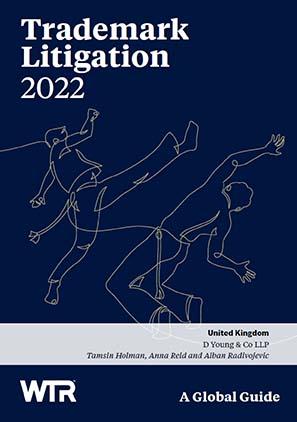The shape of originality: Ed Sheeran appears in the UK High Court
The Rolls Building in central London, which is the primary court building for matters concerning IP in the UK, has had its share of celebrities walk through its doors since it opened in 2011, but few have attracted as much attention as Ed Sheeran did, when he appeared over two days to give evidence in a trial relating to his 2017 song “Shape of You”.
It is not just celebrity, however, that makes this particular case interesting. Copyright infringement cases in relation to hit songs are relatively rare in the UK, compared to in the US where the last decade has seen cases against Led Zeppelin, Pharrell Williams and Robin Thicke, Mark Ronson and Bruno Mars, Katy Perry and even Ed Sheeran (a few times over). It was enough to draw this author down to the Rolls Building to satiate his professional curiosity.
Many will know by now that this case started several years ago, when Sam Chokri, better known as Sami Switch, complained to the PRS collection society that the “Oh I, Oh I, Oh I, Oh I” hook (you know the one) from Sheeran’s song “Shape of You” copies a substantial part of his earlier song “Oh Why”, which resulted in a freeze in Sheeran’s royalty payments. Sheeran then commenced court action, seeking a declaration that his song does not infringe.
Sheeran’s attendance in court has been well-covered in the press, but one part of his evidence caused a few questions among this author’s friends and family: In court, Ed Sheeran sang snippets of his song “I See Fire”, Nina Simone’s song “Feeling Good” and also the contentious hook. If this is about copying, they asked, why would Sheeran sing other songs in court that sound the same? Does this not show that he copied?
In part, Sheeran is trying to discredit Chokri’s claim that the hook is original. Originality, of course, is an essential element for copyright to subsist. Following Infopaq (case C-5/08), the appropriate test is to consider the earlier work as a whole, but the key is looking at the reproduced sections to determine whether they contain elements that could be said to be the expression of the intellectual creation of the author. This is a qualitative exercise rather than quantitative, so even reproducing a small part of the overall article can be a copy of a substantial part. Put another way, unimportant elements (or in this case, common or unoriginal ideas) would not be original as it would not demonstrate the expression of the author’s intellectual creation.
In Sheeran’s written evidence, he said that although he “can’t read music” this particular line is a minor pentatonic pattern and very common. He said in court, “If you put them all in the same key, they sound the same”. A minor pentatonic scale, as readers who have some basic theory know, is a 5-note scale made up on the root note, a flat 3rd, 4th, 5th and flat 7th. To say it is common is somewhat of an understatement: even if you do not know the theory, we all recognise it in many forms of music including blues, blues rock, pop and just about any guitar solo we hear on the radio.
It is, however, more complicated than that. Chokri claims there is originality in the cumulative effect of various features of the hook, not just the notes sung. This includes, he claims, the structure (“Oh Why, Oh Why, Oh Why”), tone, harmonic progression, texture, melodic fills, and the rhythmic clicking. As mentioned above, this also must be considered in the overall context of the song.
Is the hook original? This question will ultimately be a matter for the court, but it is interesting in this case that Sheeran has spent considerable effort in his evidence trying to discredit Chokri’s claim to originality. Frequently in the UK, this aspect is somewhat overlooked as the standard for originality is considered to be quite low, which if not challenged plays to Chokri’s favour. It may be rare that the court is treated to small performances from an international star, but if Sheeran is right on originality, the other elements of the claim start to fall away. The case is expected to last another two weeks from time of writing, with judgment to follow thereafter, typically within four to six weeks.

